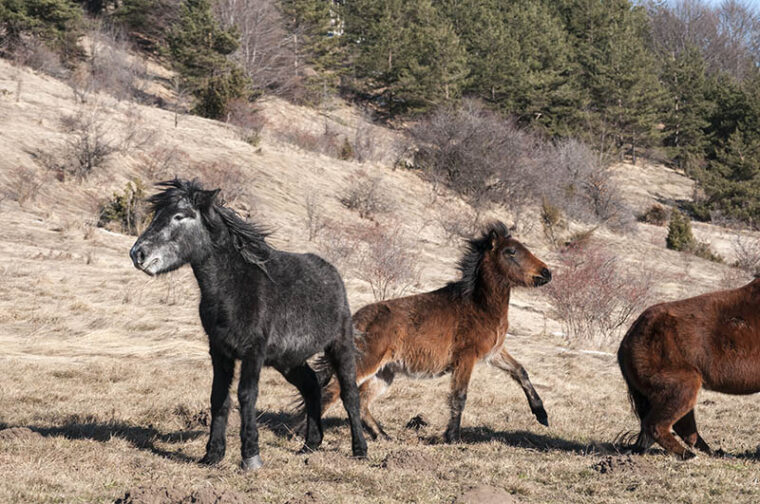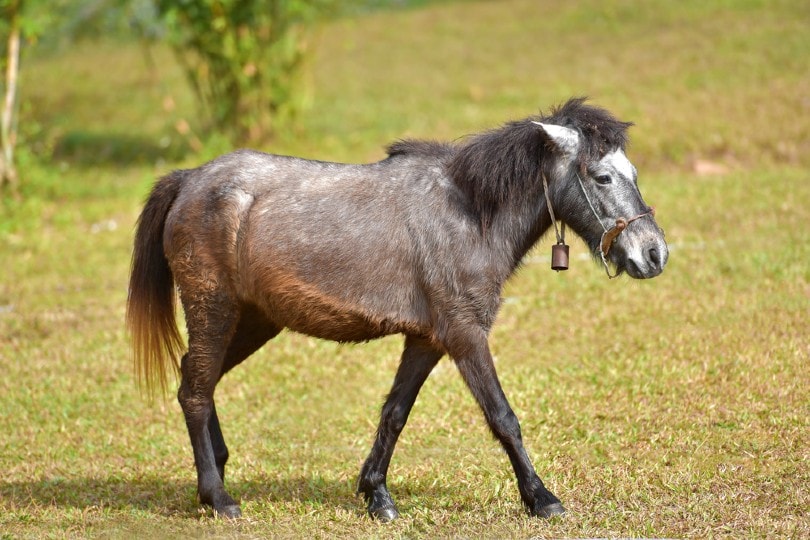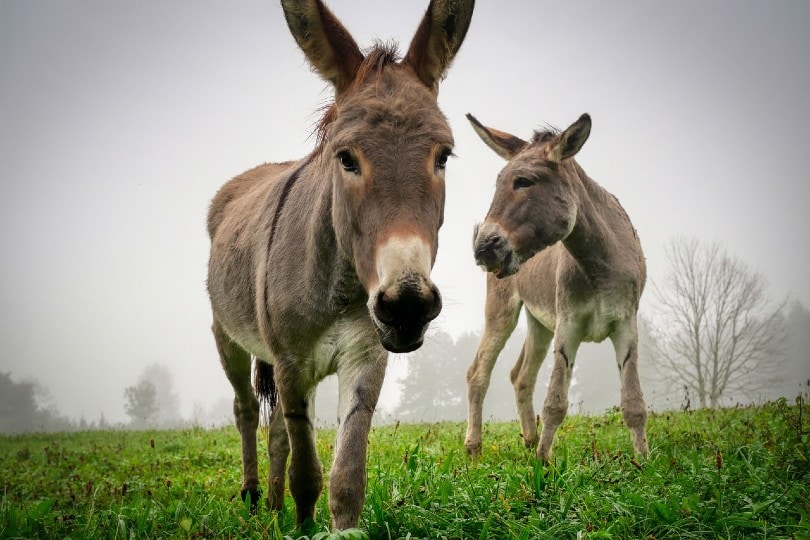
For as long as humans have domesticated animals, and especially equines, we’ve bred hybrids for various purposes. Most people know about mules, which are a cross between a male donkey (jack) and a female horse (mare). However, a male horse (stallion) and a female donkey (jenny) will produce a hinny, which looks similar to a mule.
Like mules, hinnies generally can’t reproduce because of their chromosomes. Let’s delve into that a little bit and go over some other interesting info about hinnies.
Why Can’t Hinnies and Mules Reproduce?
In mammals, each parent contributes half of the chromosomes used to produce offspring. So, what does that have to do with hinnies? Horses have 64 chromosomes, and donkeys only have 62—32 chromosomes from the horse parent and 31 chromosomes from the donkey parent equal 63 chromosomes total.
In most cases, different species can’t reproduce, but donkeys and horses have enough DNA in common to make hybrids possible. Unfortunately, their DNA isn’t similar enough to produce fertile offspring.
The extra DNA may seem inconsequential, but that extra pair of chromosomes is why mules and hinnies can’t reproduce. With that said, though, there have been some recorded cases of female mules giving birth.
Hinnies, as far as we know, are completely sterile. Male hinnies can mate, but they aren’t fertile. Usually, they simply lack sperm, but in other cases, sperm is present but lacks motility.

The Extra Chromosomes
The good news is that the extra horse chromosome pair doesn’t cause any ill effects. In other animals, including humans, extra chromosomes can cause disastrous health effects, like miscarriage or rare genetic disorders. Simply put, humans with extra DNA are usually sterile if not inheritors of deadly diseases.
In fact, hinnies and mules both have what’s called “hybrid vigor.” Because they’re hybrid species, mules and hinnies typically inherit the best genetic traits from each parent. This is why they’re great riding animals and pack animals—combining the best aspects of both donkey and horse. Mules, for example, were used in wars to carry ammunition and explosives because they don’t spook as easily as horses.
Are Hinnies the Same as Mules?
As you might expect, hinnies and mules often share some common characteristics. To the untrained eye, you might not even see a difference between the two standing side by side. However, there are some key differences that you can spot if you look closely. Let’s look at a few of those differences below.
- Hinnies are generally smaller than mules
- Hinnies tend to have a more horse-like face than mules
- Hinnies usually have thicker manes than donkeys, which often lack manes altogether
- Mules are more energetic animals, with a horse-like temperament
- Mules have a reputation for being stubborn, but hinnies are more well-known for stubbornness among equine breeders
- Mules typically have the head of a donkey with extremities similar to a horse

These aren’t hard and fast rules by any means, and both hinnies and mules vary in appearance, size, and temperament. The most important determining factors when breeding a hinny or mule are the parents. Taller horses will produce taller mules and hinnies, and miniature ones will produce miniature-sized offspring.
Mules are usually bred on purpose as riding or pack animals, while hinnies are less common because of their reputation for being hard to train. Most hinnies are actually born by accident, usually from when male horses and female donkeys are left alone in the same area without other suitable mates.
Final Thoughts
Hinnies and mules are both excellent riding, pack, and companion animals. While hinnies can be identified by a smaller stature and more thoughtful nature, they’re easily confused for mules. Unfortunately, however, both species are completely sterile and can’t reproduce.
Featured Image Credit: Alexander Varbenov, Shutterstock








